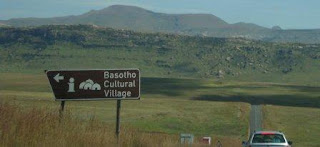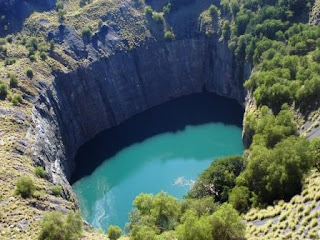Hi,
I was taken by surprise on knowing the facts of IBMs role and development is the area of Super Computers. Then, I thought why not surprise you all by these facts. Hope the following article about super computer sounds equally interesting for you too.
IBM has won a $290m US government contract to build what are expected to be the world's two fastest supercomputers at Lawrence Livermore National Laboratory.
One machine, ASCI Purple for nuclear weapons research, will be three times faster than the world's current top-ranked supercomputer, NEC's Earth Simulator, which has been clocked at 35 trillion calculations per second, or "teraflops." The other machine, the Linux-powered Blue Gene/L for civilian research, will be 10 times faster than Earth Simulator with a speed of 360 teraflops, according to IBM.
In 1993, IBM got its first systems onto the Top500 list of the world's fastest supercomputers. Today, the list includes 134 IBM machines.
The design details of Blue Gene/L still haven't been settled beyond a plan for it to have 65,636 computing nodes. The design for ASCI Purple, though, is better established, and brute force figures prominently in it.
ASCI Purple, is expected to have 196 interconnected 64-processor servers, making a total of 12,544 Power5 chips. It will come with 50 terabytes of memory -- about 20,000 times as much as a PC. The supercomputer also will have IBM disk storage arrays holding 2 petabytes, or a quadrillion bytes, of data -- about 50,000 times the capacity of a PC.
As for physical size, ASCI Purple will weigh about 197 tons, be linked to 119 miles of optical cable and 28 miles of copper cable, and occupy 8,900 square feet of floor space -- or about two basketball courts. It will consume 4.7 megawatts of power, enough current for 4,000 homes, according to IBM.
Supercomputers don't sell in as large volumes as mainstream business systems, but the market is important for other reasons. First, supercomputer research and development can be plowed back into mainstream computer products. In addition, government-funded initiatives help subsidise that development work. For example, the US Energy Department's Advanced Simulation and Computing programme, which grew out of the earlier Accelerated Strategic Computing Initiative, is underwriting ASCI Purple.
Blue Gene/L is one step in IBM's ongoing project to build a machine by 2007 that can perform a quadrillion calculations per second -- a "petaflop". The task of the ultimate Blue Gene computer will be to predict the folding of proteins, the large biological molecules that are assembled from genetic information encoded in DNA.
The 360-teraflop performance of Blue Gene/L is expected to be more than the collective 293-teraflop ability of today's entire Top500 supercomputer list.
For enormous systems with thousands of processors, a major challenge will be simply keeping all the components up and running and circumventing problem areas when they occur. IBM is working on autonomic computing technology, or machines that can diagnose and repair problems themselves, so we can make systems of this size more self-maintaining. If there are failures, they can be routed around so the machine is still available to users.
In the mid-1990s, the Energy Department launched what was then the Accelerated Strategic Computing Initiative, a plan to spur the development of supercomputers so they'd be fast enough to simulate nuclear weapons explosions in detail. The program, with a budget in the billions of dollars, was embraced by the nation's three national laboratories -- Sandia National Laboratories, Los Alamos National Laboratory and Lawrence Livermore National Laboratory -- as a way they could assure that nuclear weapons would work as designed, without having to rely on actual tests.
The result has been a succession of ever-more-powerful supercomputers. The first contract was awarded in 1995 for work at the Sandia labs in Albuquerque, N.M., on Intel's ASCI Red system. The supercomputer was designed to perform 1 trillion calculations per second, or 1 teraflop.
Next came the three-teraflop machines, Blue Mountain, built by SGI for Los Alamos National Laboratory in New Mexico, and Blue Pacific, built by IBM at the Livermore lab in California.
The third generation was ASCI White, the second IBM machine at Livermore labs. It was designed to run at 10 teraflops, but the machine topped out at 12.3 teraflops. The fourth generation, ASCI Q at Los Alamos, is designed ultimately to reach 30 teraflops. However, it's still under construction and so far exists as two 7.7-teraflop parts.
ASCI Purple -- named after the colour resulting from a mixture of red, white, and blue -- was to be the pinnacle of the programme, with a target of 100 teraflops. It was to be the system that could handle the ultimate task: a "full physics" simulation in three dimensions of a nuclear blast, both of the "primary" fission explosion that begins the process and the resulting "secondary" fusion reaction that provides most of the energy in the nuclear detonation.
But IBM believes there will be successors to ASCI Purple. ASCI was originally laid out through 100 teraflops. But clearly they have a lot more science that needs to be done within the programme. So, believe they have further aspirations.
Lab researchers are looking forward to more-sophisticated modelling abilities from future supercomputers. The primary and secondary of a simplified theoretical weapon is simulated. The simulation took about two months, but ASCI Purple will allow simulations in less time than that.
Americas dominates the supercomputing scene with 294 Super Computers followed by Europe (114), and Asia (81). In terms of countries, USA enjoys a dominant position with 255 installations, followed by Germany (40), UK (32), Japan (23), China (19), South Korea (14), France (11), and India (8).
In India, C-DAC had managed to enter the Super 500 Club in 2003 with its Param Padma Super Computer (Rank 171). Institute of Mathematical Sciences at Chennai had an entry (Rank 253) in the 2004 edition; unfortunately both have fallen out of this list in 2005.
Delhi area (ONGC (3) & Institute of Genomics) and Bangalore (Intel India (2) and Tech Pacific & PCS Trading) are the concentrations of super computing in India.
PARAM - India's reply to Super Computer
PARAM is a series of supercomputers developed by the Centre for Development of Advanced Computing (C-DAC) in Pune, India. The latest machine in the series is the PARAM Padma, which reached no. 171 on the TOP500 in 2003. Others include PARAM 10000 and PARAM 9000/SS. The PARAM 10000 was India's first TFLOPS computer.
The success of PARAM can be seen as a great example as how restrictions of scientific knowledge turned out to be a blessing in disguise. The USA's supercomputing hardware embargo of India in the early 80s forced the Indian scientists to independently develop the components required for PARAM. The various components used in the PARAM series were Sun UltraSPARC II, later IBM POWER 4 processors , Ethernet , and AIX Operating System.
C-DAC has also developed a high performance System Area Network called the PARAMNet-II having transfer speeds of up to 2.5 Gbit/s and latencies as low as 10 microseconds. The major applications of PARAM 10000 are in long-range weather forecasting, remote sensing, drug design and molecular modelling. PARAMs in the future may well be used for India's space programme. Plans to use it for oil and gas exploration are also on the line.
Hardware Resources:
Configuration : 54 Nos. of 4-Way SMP nodes and 1 No. of 32-Way SMP node.
No. of Processors : 248 (Power 4@1GHz).
Aggregate Memory : 0.5 TeraBytes (@ 8GB per node and 64GB per large SMP node).
Internal Storage : 4.5 TeraBytes (@ 72GB per node and 576GB per large SMP node).
Operating System : AIX 5L .
Aggregate Peak Computing Power : 1005 GFs (~1 TF).
While the PARAM represents a major technological leap in India, its performance pales in comparison to supercomputers from China, US and Japan.
China unveiled the Dawning 4000L, a machine which offers 3 teraflops of computing power for scientific and other types of information processing. It houses 644 Intel processors, 644GB of memory and 100 terabytes of storage. High-performance computers from Japanese and US-based companies boast of even more impressive hardware arsenals. NEC's Earth Simulator supercomputer consists of over 5,200 processors and 40 teraflops of power. IBM's upcoming Blue Gene supercomputers will boast 65,000 processors.
There are Indian hands behind the toppers in the Top 500; India-born BJ Arun founded California Data Corporation with rank 7 and India-born Professor Srinidhi Varadarajan assembled Apple cluster at Virginia Tech at rank 14 does Indians proud; when will India catch up?
Thank you for your precious time allocation.
Have a nice week-end ahead.



























